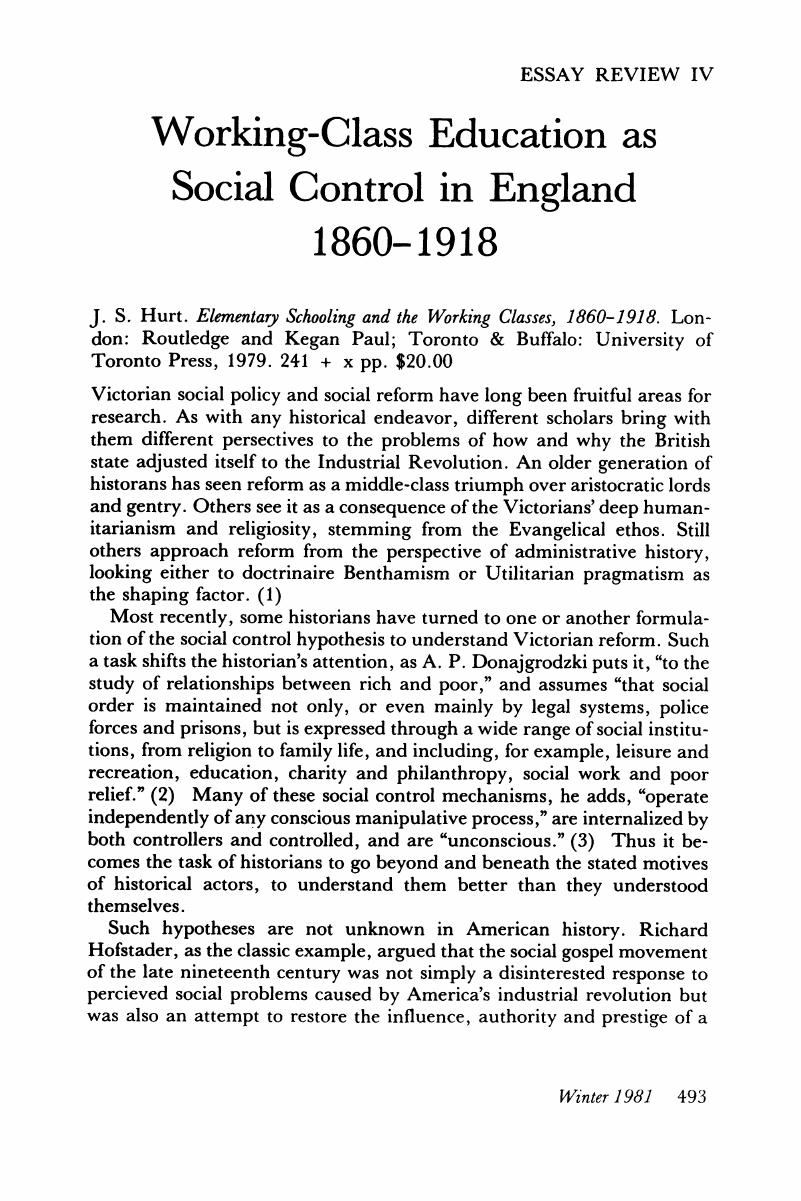Published online by Cambridge University Press: 24 February 2017

1. See MacDonogh, Oliver, Early Victorian Government, 1830–1870 (London, 1977), for a succinct introduction to the problem.Google Scholar
2. Donajgrodzki, A. P., “Introduction” to Donajgrodzki, A. P. (ed.). Social Control in Nineteenth Century Britain (London and Totowa, N.J., 1977), p. 9.Google Scholar
3. Ibid., pp. 11, 15.Google Scholar
4. Hofstadter, Richard, The Age of Reform: From Bryan to F.D.R. (New York, 1955), pp. 135–52; Griffin, Clifford S., Their Brothers' Keepers: Moral Stewardship in the United States, 1800–1865 (New Brunswick, N.J., 1960), pp. 9–17, 117, 137; Gusfield, Joseph R., Symbolic Crusade: Status Politics and the American Temperance Movement (Urbana, 1963), pp. 1–24, 57–60.Google Scholar
5. Hurt, John S., Education in Evolution: Church, State, Society and Popular Education, 1800–1870 (London, 1971).Google Scholar
6. Ibid., pp. 13–14.Google Scholar
7. Hurt, John S., Elementary Schooling and the Working Classes, 1860–1918 (London, 1979), pp. 3–4.Google Scholar
8. Johnson, Richard, “Educating the Educators: ‘Experts’ and the State, 1833–9,” in Donajgrodzki, , Social Control, pp. 83–9. See also Johnson, Richard, “Education and Social Control in Early Victorian England,” Past & Present, No. 49 (1970): 96–119.CrossRefGoogle Scholar
9. Johnson, , “Educating the Educators,” p. 100.Google Scholar
10. Ibid., pp. 85–6.Google Scholar
11. Ibid., p. 96.Google Scholar
12. Hurt, , Elementary Schooling, pp. 18–21.Google Scholar
13. Ibid., pp. 61–3.Google Scholar
14. Ibid., pp. 61, 67, 76.Google Scholar
15. Ibid., p. 78.Google Scholar
16. Ibid., pp. 62–3.Google Scholar
17. Ibid., pp. 190–1.Google Scholar
18. Ibid., pp. 87–98.Google Scholar
19. Ibid., p. 98; see also p. 93.Google Scholar
20. Ibid., pp. 94, 177.Google Scholar
21. Ibid. 177, pp. 3, 25.Google Scholar
22. Ibid., p. 27.Google Scholar
23. Ibid., pp. 4, 197–8.Google Scholar